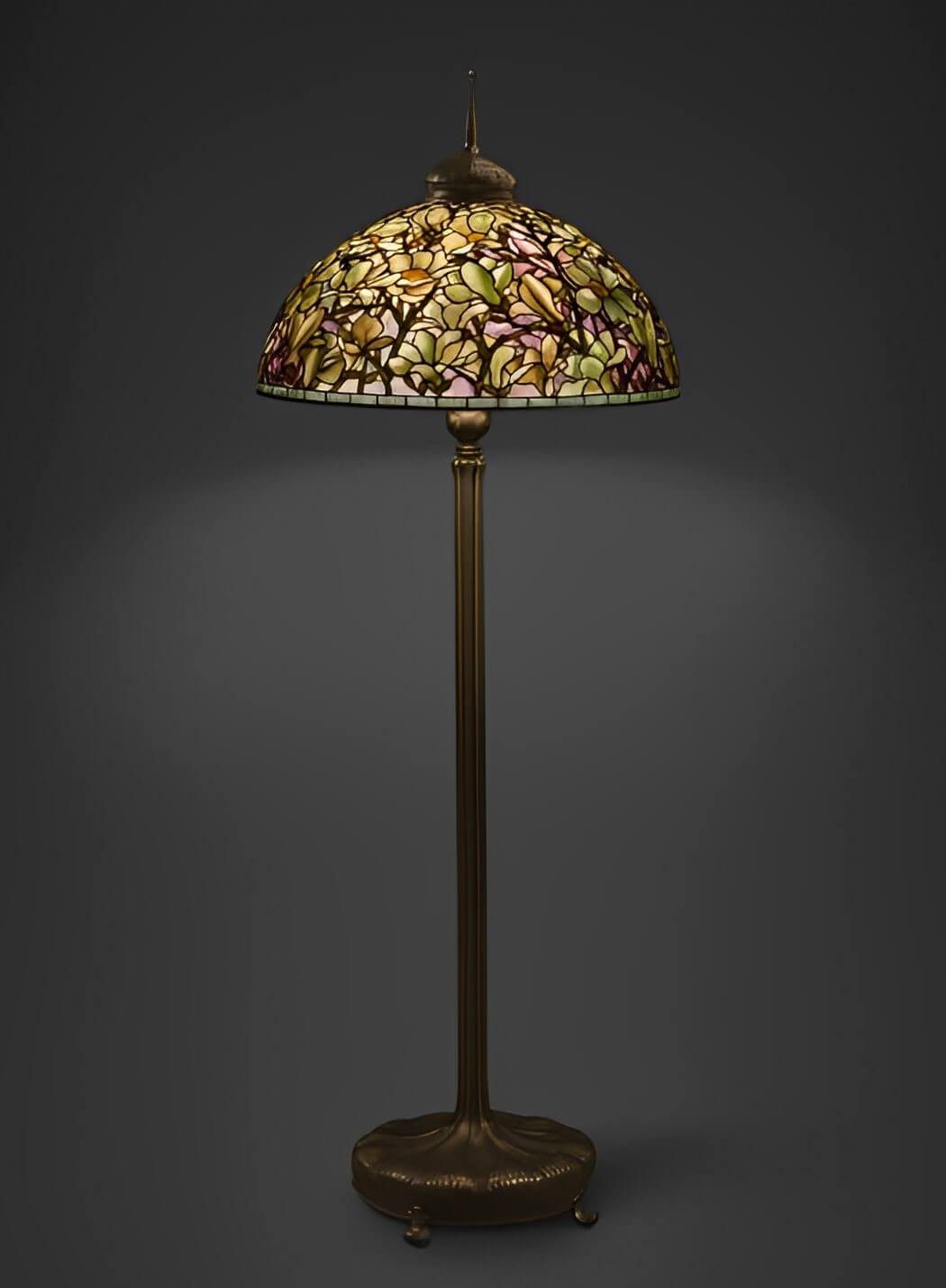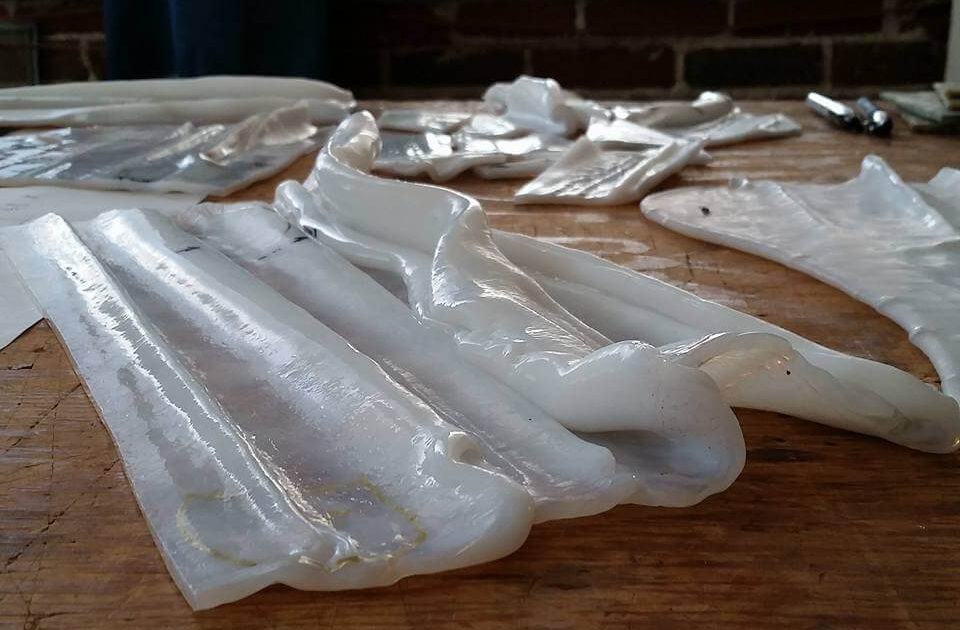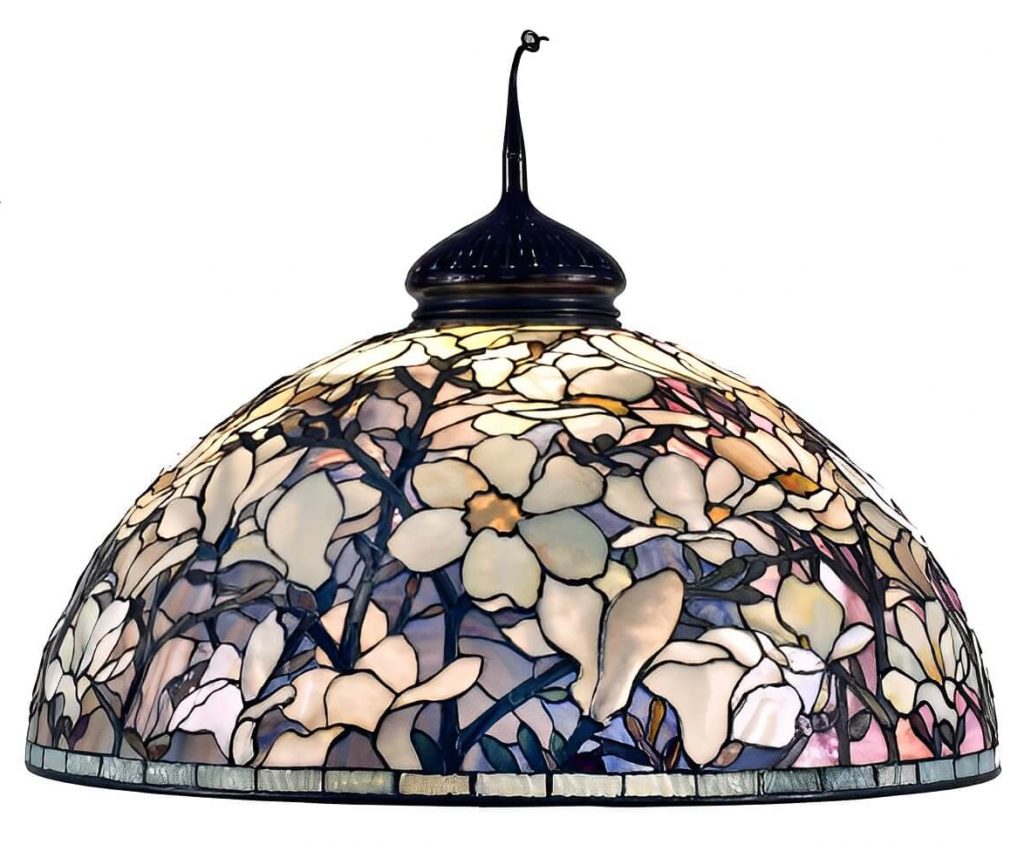

Magnolia flower
This famous stained glass shade designed by Clara Driscoll is the largest of the globes and is further distinguished by the fact that it is the only design in which drapery glass was used in substantial quantities. Company literature described this massive lamp as “appropriate for the Drawing Room or stately Reception Hall.” In 1913, when the average annual income was approximately $620, this particular shade cost a whopping $300 (pairing this shade with its companion floor base with gold patina would have brought the total to $456).

Drapery glass
Aside from an occasional leaf in other shades, this heavy texture was restricted to Louis Comfort Tiffany’s stained glass windows, since no other flower has petals large and fleshy enough to justify the employment of this particularly thick glass. While the leaves and petals of the younger plants are still rendered in the less heavy rippled and knobby glass, drapery glass forms the midribs of petals and leaves in the more mature specimens. Even if we were to disregard the huge size of the Magnolia and the inclusion of this rare glass, the shade would be outstanding because of the excellence of its floral pattern. It is of dramatic simplicity, composed almost exclusively of blossoms, branches, and background.

Magnolia on Mauve Floor Lamp, a Tiffany Studios floor lamp in New-York Historical Society
The globe of this vintage Tiffany lamp is 28″ wide, 14″ high, and has 6″ apertures. Every Magnolia Tiffany lamp has a horizontal row around its lower edge, but none at its aperture. This shade is equally at home on a large floor base or suspended from the ceiling.

Magnolia on Mauve lampshade, a Tiffany lamp shade in New-Work Historical Society
This appears to be the least mature of the specimens shown, therefore less need was felt for drapery glass in the construction of this shade. The desired effects were achieved by the use of other less theatrical but equally interesting glass types. One which was liberally employed is covered with scores of pea-sized knobs on its inside surface. Though its heavy texture can best be seen in the large open blossom (at the center of the shade), the majority of the whitish petals are fabricated from the same sort of knobby glass which has also been used for the orange-yellow flower centers. The knobs are inside the shade, but they show through and convey a strong impression of the magnolia’s fleshiness.
In other areas, use is made of striations in a peculiar manner so that they appear extremely heavy at the center of the petal, gradually petering out toward its edges. The background is bluish-gray interspersed with golden hues. Dimensional effects were also achieved by lapping one petal over another. In some portions of the shade, petals overlap limbs and twigs, and, in so doing, protrude as high as ½” above the surface of the shade.
